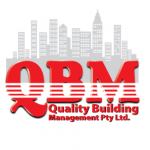Asbestos is in the news frequently in Australia, for good reason. There is a massive effort to eradicate or safely seal all asbestos containing materials (ACMs) and structures nationwide, in attempts to prevent asbestos disease from claiming more Australian lives. Asbestos audits are required in non-residential buildings, and homeowners are encouraged to remove or contain deteriorating asbestos products. Today, home renovations are not undertaken without government guidance, to prevent releasing asbestos.
How do you identify asbestos?
After reading about asbestos products, you may think they are easy to spot; just look for hairy, fibrous materials, right? Wrong. This is an important task, best left to experts. Lengths of asbestos mineral fibres range from 2 to 5 millimetres, and are barely visible. Processing and bonding fibres into cement and other materials conceals the raw appearance of asbestos, making it impossible to identify asbestos containing materials (ACMs) without magnification and expertise.
You can’t see asbestos in products by just examining with the naked eye. You need a powerful microscope, and expert knowledge of these minerals. In fact, according to the National Occupational Health and Safety Commission, only those trained in identification of asbestos containing materials are qualified to make these determinations.
Helpful information to have on hand when identifying asbestos in your house is a history of original construction and renovations. Knowing the installation dates of construction materials will help to determine if the material should be sampled for possible asbestos. Any construction materials made before the ban of December 31, 2003 may contain asbestos. Australian built structures from 1920 to 1988 almost certainly contain asbestos.
Getting Started
The year your building was constructed is an important piece of the jigsaw puzzle in determining whether asbestos is present in an area. However, where there is doubt, it is best to assume that it is present. Buildings and ships built before the 1980s are likely to contain asbestos related materials. A competent person will assess the entire location to identify areas where asbestos containing materials are commonly found. If the professional is unable to identify the type and presence of asbestos, then samples will be taken and sent to an accredited laboratory. An Asbestos Report along with an Asbestos Management Plan (AMP) should be prepared to comply with the new legislation.
Sampling
How do you determine if a material contains asbestos? Collecting samples and sending to an approved laboratory is the only way to positively confirm the presence of asbestos. Sampling is a highly specialised procedure, and can disperse asbestos fibres, contaminating the area if not performed carefully. This is a situation where it pays to hire an expert.
If you suspect an item is made of asbestos but you’re not sure, assume asbestos is present and treat the material according to guidelines suggested by your local Environmental Health Officer. Many products installed before 1988 do contain asbestos. For a list of asbestos containing materials, refer to the National Occupational Health and Safety Commission Code of Practice for the Safe Removal Of Asbestos (2nd Edition, [2018(2005)]
At The Laboratory
Samples that are taken from the suspect location will undergo a series of tests to determine the type and presence of asbestos in the material. Depending on the asbestos assessor’s request, the test can either be air testing or bulk testing. The laboratory you decide to use should be accredited by the National Association of Testing Authorities (NATA) and should comply with the state-specific Australian legislation for airborne and bulk testing.
When the testing is complete, a report will be prepared by the laboratory specifying the type of asbestos that was found in the material. If tests were performed on airborne asbestos fibres, then specifications will be made regarding the number of fibres per millilitre. The acceptable limit is less than 0.01 f/mL. Any result that is higher than this is a potential risk to human health, and control measures will have to be established to arrive at a possible solution regarding the removal of the material.

